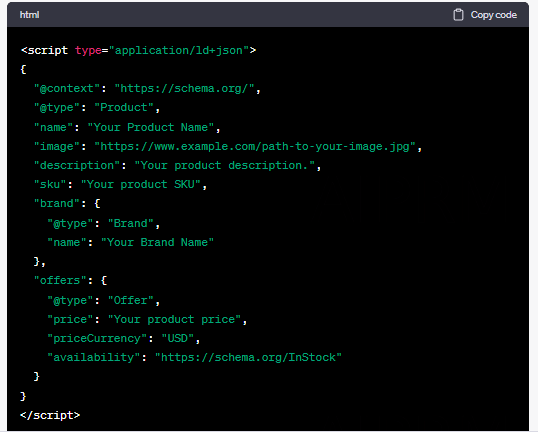Introduction
[Paragraph introducing the topic of schema tags and their importance for Shopify store owners.]
1. Introduction to Schema Tags and Shopify
[Provide a brief overview of schema tags and their role in providing structured data to search engines. Explain Shopify as a popular e-commerce platform.]
2. Why Schema Tags are Important for SEO
[Highlight the significance of schema tags in improving search engine optimization (SEO) and driving organic traffic. Discuss the benefits of structured data, such as enhanced search snippets, better visibility, and increased click-through rates.]
3. How to Add Schema Tags to Shopify
[Provide step-by-step instructions on adding schema tags to Shopify.]
3.1. Installing an SEO app
[Explain the process of installing and configuring an SEO app from the Shopify App Store. Suggest popular SEO apps that offer schema markup functionality.]
3.2. Choosing the right schema markup
[Discuss the importance of selecting the appropriate schema markup for different types of content, such as products, reviews, events, and articles. Provide examples of commonly used schema types.]
3.3. Implementing schema tags in Shopify
[Guide users on how to access the theme code editor in Shopify and locate the relevant template files for adding schema markup. Explain the syntax and placement of schema tags within the code.]
3.4. Verifying schema implementation
[Outline the steps to verify the correct implementation of schema tags using Google's Structured Data Testing Tool or other validation tools. Highlight the importance of fixing any errors or warnings that may arise during the verification process.]
4. Testing and Monitoring Schema Tags
[Explain the significance of ongoing testing and monitoring of schema tags. Provide suggestions for tracking the performance of structured data, monitoring search appearance, and making adjustments as necessary.]
5. Conclusion
[Summarize the benefits of adding schema tags to Shopify and reiterate the importance of structured data for SEO. Encourage readers to implement schema tags and optimize their Shopify stores for better search visibility.]
Remember to proofread and optimize the blog post for SEO, adding relevant internal and external links where appropriate.
To add schema tags to your Shopify store, you can follow these steps:
1.Log in to your Shopify admin panel.
2. From the sidebar, click on "Online Store" and then select "Themes."
3. In the "Themes" section, locate the theme you want to edit and click on the "Actions" button. From the dropdown menu, choose "Edit code."
4. In the code editor, find and click on the "theme.liquid" file on the left side panel. This file contains the main template for your theme.
5. Scroll down to the <head> section of the "theme.liquid" file. This is where you should add your schema tags.
6. Within the <head> section, find the closing </head> tag and place your cursor just before it.
7. Now, you can add your schema tags. Schema.org provides a wide range of structured data options for different types of content. You can choose the appropriate schema markup for your content and add it between the <head> and </head> tags.
8. Replace the placeholder values (e.g., "Your Product Name," "https://www.example.com/path-to-your-image.jpg," etc.) with the appropriate information for your product.
9. Repeat the process for any other schema tags you want to add, such as organization, breadcrumbs, or reviews.
10. After adding the schema tags, click on the "Save" button to save your changes.
11.It's always a good practice to test your schema markup using Google's Structured Data Testing Tool or the Rich Results Test tool to ensure that it's correctly implemented and recognized by search engines.
Remember to customize the schema tags according to your specific needs and the type of content you want to mark up.
Read More:- Robots.txt File Format in Shopify Website
How to Rank Instagram and Facebook Posts in Google(SERP) & Other Search Engines




0 Comments